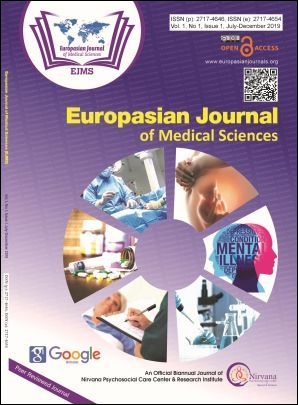Pain in Separation of the Molars among the Orthodontic patients
Keywords:
Pain, Separators, Universal Pain Assessment Tool, Separation of Molar Teeth, Molar Teeth, Orthodontic Treatment, Tooth PainAbstract
Introduction: Pain has been the most common and foremost reason for discontinuing the orthodontic treatment. The patients usually experience pain in Orthodontic treatment during separator placement, wire placement, headgear wear, and rapid palatal expansion. Placement of orthodontic separators (brass wire, elastomeric, spring-type steel separators, and latex elastics) results in a painful experience. Therefore the purpose of the study is to assess the pain perception among the patients seeking orthodontic treatment.
Methods: This study was carried out amongst 120 (53 male and 67 female) patients seeking orthodontic treatment. Elastomeric separators were placed mesially and distally to the first molars and the participants were given a self-administrated Universal pain assessment Tool to document perceived pain and pain upon chewing, using a visual analog scale for seven days. Total scores were calculated and descriptive statistics in the form of a number (mean) and percentage were calculated.
Results: This study showed a mean score for perceived pain of each day to be 7.16, 7.1, 6.05, 4.67, 3.69, 2.88, and 2.27 respectively with a mean of 4.831 +/- 1.273. Similarly, the mean score for pain on chewing was 8.21, 7.53, 6.62, 5.19, 4.38, 3.65, and 3 with a mean of 5.5119 +/- 1.269.
Conclusions: There was a significant difference in pain perception among the male and female participants, females having higher pain perception. There was a significant difference in pain perception between the Adolescent and Adult in both normal life and during eating.
Downloads
Downloads
Published
How to Cite
Issue
Section
License
The author(s) retain the ownership of the copyrights for their work published in EJMS without any restrictions. Upon submission, the author(s) grants EJMS a license to publish, including to display, store, copy, and reuse the published content.
License to Publish
By submitting a manuscript to EJMS, the author(s) grant the journal a non-exclusive license to:
- Publish and distribute the content in all formats, media, and platforms (both existing and future), while identifying EJMS as the original publisher.
- Reproduce, display, and store the content in both print and online formats, including institutional and digital repositories.
- Translate, adapt, and summarize the work, including reprints, extracts, and abstracts.
- Develop derivative works based on the original content.
- Include the work in electronic databases and provide links to third-party materials.
Creative Commons Licensing
In addition to EJMS’s publishing rights, authors grant third parties the right to use, share, and distribute their work under the Creative Commons Attribution 4.0 (CC BY 4.0) International License. This allows unrestricted use of the content, provided proper attribution is given to the original author(s) and the journal.

